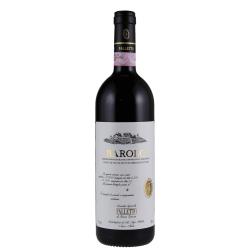PIEDMONT
From the northern region of Piedmont, the Barolo and Barbaresco wines are the preeminent choice as the best are some of the most sought-after wines in the world. Both are derived from the Nebbiolo varietal which takes its name from the word nebbia, meaning mist or fog, as it is characteristically harvested in late October when fog settles in much of the growing area. Nebbiolo, like Pinot Noir, requires carefully chosen soil and climate, and when accommodated, will produce wines that are incredibly full-bodied while offering a harmonious balance and bouquet, fully expressing the qualities of this unique terroir.
Barolo
Barolo is considered the “wine of kings” and was favored by the monarchs of the House of Savoy. These wines require patience. Barolo is often kept in casks for 3 years and should be aerated an hour ahead of time to allow for a slight oxidation. Patience is rewarded, as these wines are robust and wonderful now, yet their complex aromas and flavors will become more nuanced with age.
Our recommendations center around those from esteemed houses of Roagna and Bruno Giacosa as well as the hilltop vineyard of Vietti, all of which offer outstanding examples of wines crafted by masters of viticulture who specialize in the Nebbiolo varietal.
The 2010 Barolo from Vietti benefits from an exceptional location and climate, and is a dazzling, bold wine offering a true expression of the region’s exalted status among Italian wines, characteristically robust with a polished finish.
Barbaresco
From Giacosa Fratelli vineyards located in the Langhe hills, we see a range of extraordinary Barolo and Barbaresco. The 2007 Giacosa Barbaresco is an opulent wine with rich signature tar aromas and elegant fruit and a strong finish. This is a statement wine that will leave a lasting impression.
Roagna offers single vineyard wines with a commitment to biodiversity that excludes the use of pesticides, herbicides, and fertilizers. Their exceptional Barbaresco is another standout worth trying. While it is aged in large oak casks, the emphasis is on expressing the unique qualities of the terroir, not the oak.








